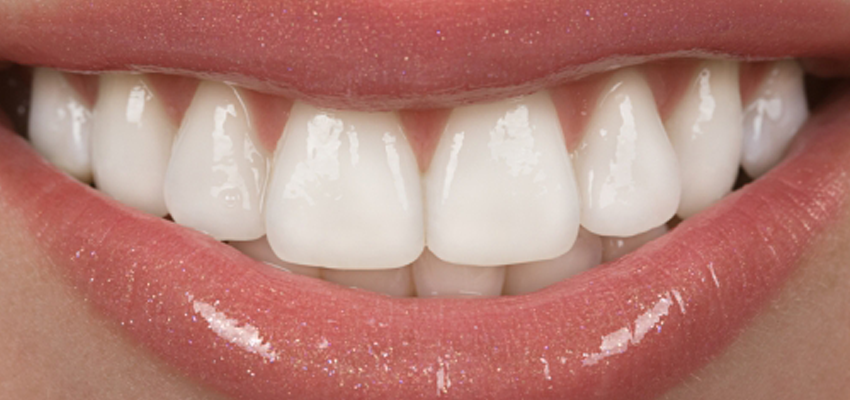
Orthodontics, formerly orthodontia (from Greek orthos "straight or proper or perfect"; odous "tooth"; -tia “science”) is the first specialty of dentistry that is concerned with the study and treatment of malocclusions (improper bites), which may be a result of tooth irregularity, disproportionate jaw relationships, or both. Orthodontic treatment can focus on dental displacement only, or can deal with the control and modification of facial growth.
In simple words, orthodontics can help straighten crooked, crowded or spaced teeth and related structures to achieve a pleasant and beautiful smile and face.
The most commonly used orthodontic braces which offer reliable results at comparatively less cost. The ONLY disadvantage is that they are seen! These braces consist of metal brackets and arch wires and are popular with young children and some teenagers. You can sometimes choose a variety of colors of elastic ties to make a style statement.
"Clear" braces, serve as a cosmetic alternative to traditional metal braces by blending in more with the natural colour of the teeth or having a less conspicuous or hidden appearance. Typically, these brackets are made of ceramic or plastic materials and function in a similar manner to traditional metal brackets. Clear elastic ties and white metal ties are available to be used with these clear braces to help keep the appliances less conspicuous.
Lingual braces are a cosmetic alternative to those who do not wish the braces to be visible. Custom made fixed braces are bonded to the backside of the teeth making them invisible to other people. Dr Pranav Mahajan, our orthodontist, has completed his specialized training in Lingual Orthodontics in 2007 and has been routinely practicing this modality in adults whose social profile does not allow them to have their braces seen.
Invisalign™, Clear Aligners™, or ClearPath™ are “virtually invisible” removable set of transparent aligners which are rapidly gaining popularity for their convenience of use and looks.
Teeth are situated in the upper (maxillary) and lower (mandibular) jaws. When jaw positions are not proper with respect to eachother or the face of the patient, only getting teeth in line will not give the ideal result.
In dentofacial orthopedics, we aim to favourably influence jaw positions during active growth of children. Myofunctional appliances and orthopedic appliances are designed to enhance, restrict and redirect jaw growth.
At an early age (first orthodontic check up is recommended at no later than 7 years of age), the orthodontist can detect subtle problems in growth and guide jaws in a more favourable position so that not only the appearance of teeth, but also the jaws and hence the face in general improves.
This encompasses the planning and presurgical decompensation for the correction of excessively small or large jaws and deviations of jaw bones by surgery.
Surgical orthodontics is followed by orthognathic surgery which is performed by an oral and maxillofacial surgeon who uses orthognathic surgery to reposition one or both jaws. Just as "orthodontics" means "straight teeth", "orthognathic" means "straight jaws". In fact, because moving the jaws also moves the teeth, orthognathic surgery is usually performed in conjunction with orthodontics so that the teeth are in proper position after surgery.
The objective of surgical orthodontics is the correction of a wide range of minor and major facial and jaw irregularities, and benefits include an improved ability to chew, speak, breathe, and of course an enhanced appearance of the face.
A healthy & beautiful smile at any age You’re never too old to benefit from orthodontic treatment. Today, adults make up about one in every five orthodontic patients. Here’s why:
Orthodontic treatment can help correct crooked teeth or spaces that you’ve been self-conscious about for years. It can give you the confidence and pride that come with straight teeth and a great smile.
Leaving misaligned teeth untreated may lead to other dental problems such as tooth decay and bleeding gums, bad breath, as well as abnormal grinding of tooth surfaces and difficulty in chewing. Orthodontic treatment can help you keep good dental health.
Advances in orthodontics have made treatment more comfortable and more successful than ever for people of all ages. Orthodontists work with other dental practitioners — general dentists, periodontists, prosthodontists, oral surgeons — to provide a comprehensive approach to your dental health.
Advances in orthodontic materials have made braces look better or even disappear as in case of invisible orthodontics.
Adjunctive orthodontic treatment for adults is tooth movement carried out to facilitate other dental procedures necessary to control disease, restore function and/or enhance appearance. Almost always, it involves only a part of the dentition, and the primary goal usually is to make it easier or more effective to replace missing or damaged teeth. Making it easier for the patient to control periodontal problems is a frequent secondary goal, and sometimes is the primary goal. The treatment duration tends to be a few months, rarely more than a year.
Typically, adjunctive orthodontic treatment will involve any or all of several procedures:
1. Repositioning teeth that have drifted after extractions or bone loss so that more ideal fixed or removable partial dentures can be fabricated, or so that implants can be placed;
2. Alignment of anterior teeth to allow more esthetic restorations or successful splinting, while maintaining good bone contour and embrasure form;
3. Correction of crossbite if this compromises jaw function
4. Pulling down of badly broken down teeth to expose sound root as a stable structure on which to place crowns.